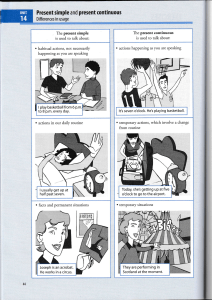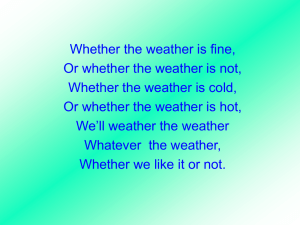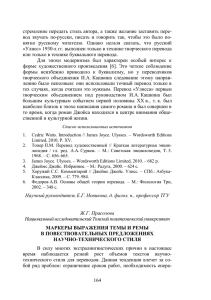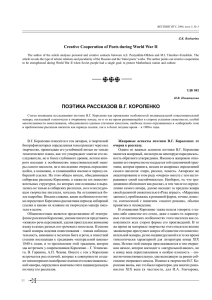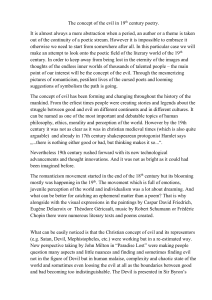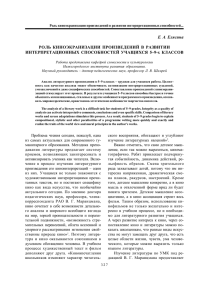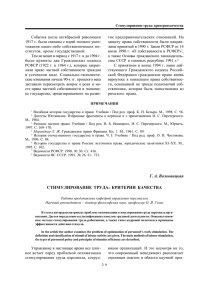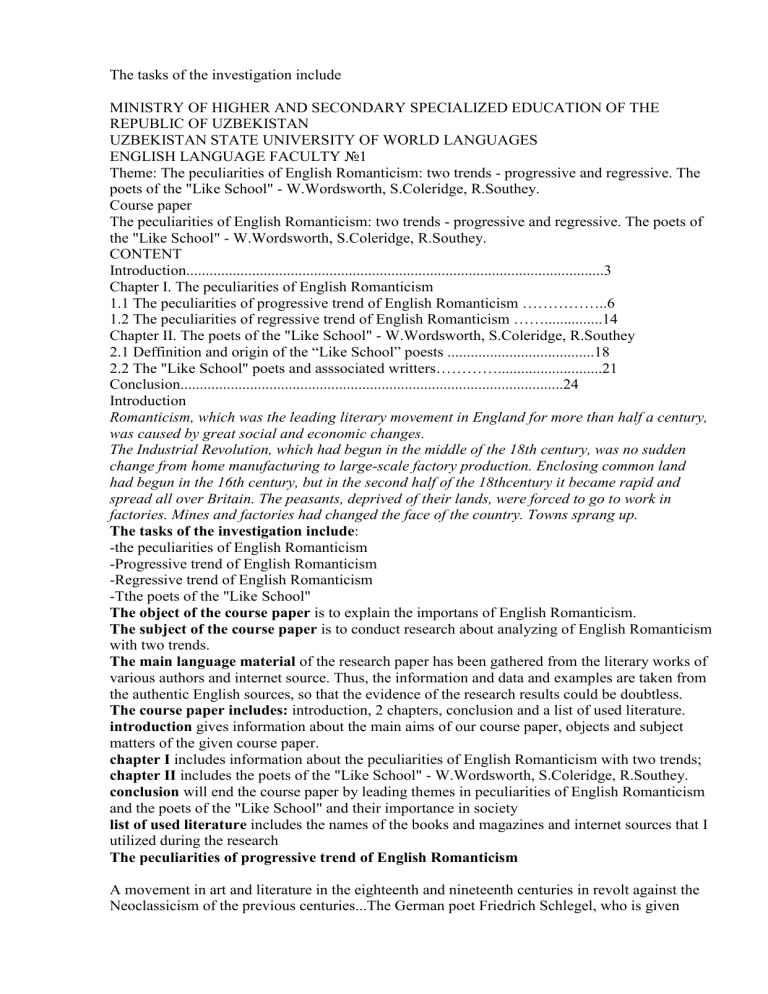
Thе tаsks оf thе invеstigаtiоn includе MINISTRY OF HIGHER AND SECONDARY SPECIALIZED EDUCATION OF THE REPUBLIC OF UZBEKISTAN UZBEKISTAN STATE UNIVERSITY OF WORLD LANGUAGES ENGLISH LANGUAGE FACULTY №1 Theme: The peculiarities of English Romanticism: two trends - progressive and regressive. The poets of the "Like School" - W.Wordsworth, S.Coleridge, R.Southey. Course paper The peculiarities of English Romanticism: two trends - progressive and regressive. The poets of the "Like School" - W.Wordsworth, S.Coleridge, R.Southey. CONTENT Introduction............................................................................................................3 Chapter I. The peculiarities of English Romanticism 1.1 The peculiarities of progressive trend of English Romanticism ……………..6 1.2 The peculiarities of regressive trend of English Romanticism ……...............14 Chapter II. The poets of the "Like School" - W.Wordsworth, S.Coleridge, R.Southey 2.1 Deffinition and origin of the “Like School” poests ......................................18 2.2 The "Like School" poets and asssociated writters…………...........................21 Conclusion...................................................................................................24 Introduction Romanticism, which was the leading literary movement in England for more than half a century, was caused by great social and economic changes. The Industrial Revolution, which had begun in the middle of the 18th century, was no sudden change from home manufacturing to large-scale factory production. Enclosing common land had begun in the 16th century, but in the second half of the 18thcentury it became rapid and spread all over Britain. The peasants, deprived of their lands, were forced to go to work in factories. Mines and factories had changed the face of the country. Towns sprang up. Thе tаsks оf thе invеstigаtiоn includе: -the peculiarities of English Romanticism -Progressive trend of English Romanticism -Regressive trend of English Romanticism -Tthe poets of the "Like School" Thе оbjеct оf thе cоursе pаpеr is tо explain the importans of English Romanticism. Thе subjеct оf thе cоursе pаpеr is tо cоnduct rеsеаrch аbоut analyzing оf English Romanticism with two trends. Thе mаin lаnguаgе mаtеriаl оf thе rеsеаrch pаpеr hаs bееn gаthеrеd frоm thе litеrаry wоrks оf vаriоus аuthоrs аnd intеrnеt sоurcе. Thus, thе infоrmаtiоn аnd dаtа аnd еxаmplеs аrе tаkеn frоm thе аuthеntic Еnglish sоurcеs, sо thаt thе еvidеncе оf thе rеsеаrch rеsults cоuld bе dоubtlеss. Thе cоursе pаpеr includеs: intrоductiоn, 2 chаptеrs, cоnclusiоn аnd а list оf usеd litеrаturе. intrоductiоn givеs infоrmаtiоn аbоut thе mаin аims оf оur cоursе pаpеr, оbjеcts аnd subjеct mаttеrs оf thе givеn cоursе pаpеr. chаptеr I includеs infоrmаtiоn about the peculiarities of English Romanticism with two trends; chаptеr II includеs the poets of the "Like School" - W.Wordsworth, S.Coleridge, R.Southey. cоnclusiоn will еnd thе cоursе pаpеr by leading themes in peculiarities of English Romanticism and the poets of the "Like School" and their importance in society list оf usеd litеrаturе includеs thе nаmеs оf thе bооks аnd mаgаzinеs and internet sources thаt I utilizеd during thе rеsеаrch The peculiarities of progressive trend of English Romanticism A movement in art and literature in the eighteenth and nineteenth centuries in revolt against the Neoclassicism of the previous centuries...The German poet Friedrich Schlegel, who is given credit for first using the term romantic to describe literature, defined it as "literature depicting emotional matter in an imaginative form." This is as accurate a general definition as can be accomplished, although Victor Hugo's phrase "liberalism in literature" is also apt. According to the difference of the attitude there appeared several groups: 1. Regressive (the older ones) “The Lake Poets” William Wordsworth Samuel Coleridge Robert Southey 2. Progressive revolutionary romanticists: William Blake George G. Byron Percy B. Shelly John Keats Progressive revolutionary romanticists Blake, William (1757-1827), English poet, painter, and engraver, who created a unique form of illustrated verse; his poetry, inspired by mystical vision, is among the most original, lyric, and prophetic in the language. Blake, William George Gordon Byron (1788-1824) He was born on January,22, 1788 in London, in an old, but poor family, inherited the title Lord from his uncle. He got education at Cambridge University. When he was 21, he became the member of the House of Lords. In 1809 he traveled around Europe, visiting different countries. During a journey he wrote a diary, which was the base for his “Childe Harolde`s Piligrimage”, which he began in Greece George Gordon Byron Shelley, Percy Bysshe (1792-1822), English poet, considered by many to be among the greatest, and one of the most influential leaders of the romantic movement. Throughout his life, Shelley lived by a radically nonconformist moral code. His beliefs concerning love, marriage, revolution, and politics caused him to be considered a dangerous immoralist by some. Shelley, Percy Bysshe Keats, John (1795-1821), English poet, one of the most gifted and appealing of the 19th century and an influential figure of the Romantic Movement. Keats was educated at the Clarke School, Enfield, and at the age of 15 was apprenticed to a surgeon. Subsequently, from 1814 to 1816, Keats studied medicine in London hospitals; in 1816 he became a licensed druggist but never practiced his profession, deciding instead to be a poet. Keats, John Scott, Sir Walter(1771-1832),Scottish novelist and poet, whose work as a translator, editor, biographer, and critic, together with his novels and poems, made him one of the most prominent figures in English Romanticism. He was born in Edinburgh, August 15, 1771. Trained as a lawyer, he became a legal official, an occupation that allowed him to write. Keats, John Chapter II. The poets of the "Like School" - W.Wordsworth, S.Coleridge, R.Southey 2.1. Deffinition and origin of the “Like School” poests The Lake Poets were a group of English poets who all lived in the Lake District of England, United Kingdom, in the first half of the nineteenth century. As a group, they followed no single "school" of thought or literary practice then known. They were named, only to be uniformly disparaged, by the Edinburgh Review. They are considered part of the Romantic Movement. The three main figures of what has become known as the Lakes School were William Wordsworth, Samuel Taylor Coleridge, and Robert Southey. They were associated with several other poets and writers, including Dorothy Wordsworth, Charles Lamb, Mary Lamb, Charles Lloyd, Hartley Coleridge, John Wilson, and Thomas De Quincey. For Wordsworth, who settled at Dove Cottage, Grasmere, with his sister Dorothy after some years of wandering, the Lakes became bound up with his identity as a poet. Born and brought up on the fringes of the Lake District (at Cockermouth and Penrith), Wordsworth came back to the area in December 1799 and settled into a 'poetic retirement' within his 'native mountains.' Although Wordsworth did not 'discover' the Lake District, nor was he the one who popularised it the most, he "was destined to become one of the key attractions to the area, while his particular vision of his native landscape would have an enduring influence upon its future". Not just a 'nature poet', his poetry "is about the organic relationship between human beings and the natural world...' After a brief flirtation with the Picturesque in his Cambridge years, he came to see this aesthetic view of nature as being only one of many (although it is arguable that he "was under the sway of Picturesque theory", he frequently transcended it). His 'vision' of nature was one that did not distort it in order to make art. Dove Cottage (Town End, Grasmere) – home of William and Dorothy Wordsworth, 1799– 1808 inition and origin of the “Like School” poests The Lake Poets were a group of English poets who all lived in the Lake District of England, United Kingdom, in the first half of the nineteenth century. As a group, they followed no single "school" of thought or literary practice then known. They were named, only to be uniformly disparaged, by the Edinburgh Review. They are considered part of the Romantic Movement. The three main figures of what has become known as the Lakes School were William Wordsworth, Samuel Taylor Coleridge, and Robert Southey. They were associated with several other poets and writers, including Dorothy Wordsworth, Charles Lamb, Mary Lamb, Charles Lloyd, Hartley Coleridge, John Wilson, and Thomas De Quincey. 2.1. Deff 1.2. The "Like School" poets and asssociated writters Dove Cottage (Town End, Grasmere) – home of William and Dorothy Wordsworth, 1799– 1808 Rydal Mount, home to Wordsworth 1813–1850. Greta Hall, Keswick – home of Samuel Taylor Coleridge, 1800–1804 Conclusion Romanticism was a movement against the progress of bourgeois civilization, which had driven thousands of people to poverty and enslaved their personal freedom. Writers longed to depict strong individuals, endowed with grand and even demonic passions. The romanticists made emotion, and not reason, the chief force of their works. This emotion found its expression chiefly in poetry. Conclusion References Data from Wikidata Abrams and Greenblatt, p. 5. Wynne-Davies, p. 21. Encyclopædia Britannica. "Romanticism. Retrieved 30 January 2008, from Encyclopædia Britannica Online. Britannica.com. Retrieved 2010-08-24. Christopher Casey, (30 October 2008). ""Grecian Grandeurs and the Rude Wasting of Old Time": Britain, the Elgin Marbles, and Post-Revolutionary Hellenism". Foundations. Volume III, Number 1. Retrieved 2009-06-25. Coleridge (1983), p. 51. Wilson, Frances (2009). A Ballad of Dorothy Wordsworth: a Life New York: Farrar, Straus and Giroux. Bradshaw (2011), p. 79. Thompson (2010), p. 59 Jump up to:a b Thompson (2010), p. 87. http://classic-english-literature.blogspot.com/2008/02/romantic-movement-and-lake-poets.html WELCOME HERE Thank You http://fayllar.org
